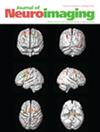Conventional and Advanced Imaging Features of CNS Intravascular Lymphoma
Abstract
Background and Purpose
Intravascular lymphoma (IVL) is a rare and aggressive lymphoma subtype that poses diagnostic challenges due to its nonspecific clinical presentation. This study aimed to evaluate the imaging findings of this disease in the CNS and to assess the diagnostic potential of advanced imaging techniques, including dynamic susceptibility contrast (DSC) perfusion, magnetic resonance spectroscopy (MRS), and fluorine-18 fluorodeoxyglucose (FDG) PET.
Methods
Twenty-one pathologically confirmed cases of IVL with CNS involvement were evaluated. Two cases underwent DSC perfusion, three underwent MRS, and three underwent FDG PET.
Results
Ninety percent of patients had intracranial imaging findings. The most common imaging pattern on brain MRI was infarct-like lesions (68%), followed by mass-like enhancement and nonspecific white matter changes (11% each). The remaining findings included enhancing lesions without mass effect and a central pontine T2/fluid-attenuated inversion recovery hyperintensity, each observed in one patient. T2* imaging abnormalities were found in 60% of cases. Vascular irregularity on noninvasive angiographic imaging was observed in 30% of cases. Spinal intradural involvement was found in four cases (19%), including three cases with nerve root enhancement and one case with spinal cord infarction. MRS showed variable choline/creatine ratios elevation in two out of three cases. No cases showed apparent cerebral blood volume elevation on DSC perfusion or increased uptake on FDG PET.
Conclusion
Several imaging findings can be observed in CNS IVL, with infarct-like lesions being the most common. Awareness of these imaging features is crucial for the accurate diagnosis of this challenging entity.

 求助内容:
求助内容: 应助结果提醒方式:
应助结果提醒方式:


